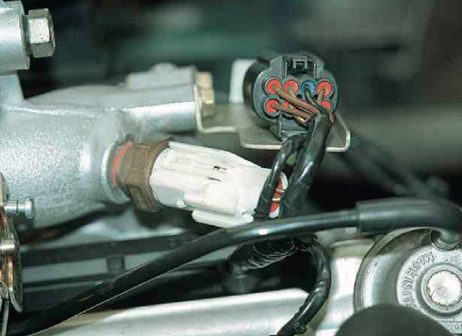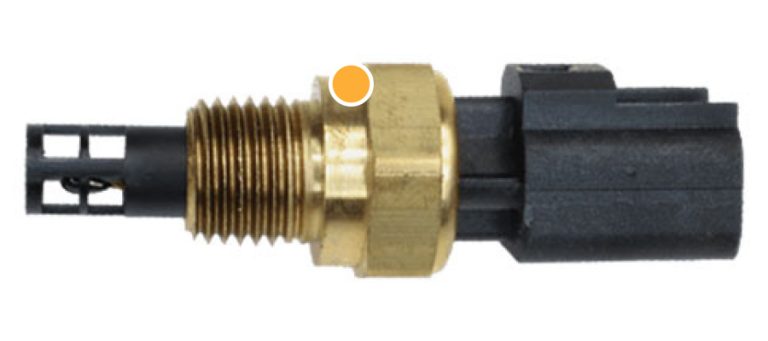An air temperature sensor is a device that is used to measure the temperature of the surrounding air. These sensors can be found in a wide range of applications, including weather stations, automotive systems, industrial processes, and HVAC systems. In this blog post, we’ll take a closer look at air temperature sensors, how they work, and their various applications.
How does an air temperature sensor work?
Air temperature sensors work by measuring the resistance or voltage of a thermistor or RTD (resistance temperature detector) element. A thermistor is a type of resistor that changes its resistance based on the temperature, while an RTD changes its resistance in a more linear fashion based on temperature. The sensor is typically mounted in a protective housing to prevent it from being affected by outside factors like wind, moisture, and other environmental factors.
As the temperature changes, the resistance of the thermistor or RTD element changes as well. This change in resistance is measured by the sensor and is converted into a digital signal that can be interpreted by a microcontroller or other electronic device. The microcontroller then processes the signal and sends it to a display, computer, or other output device.
Applications of air temperature sensors
Air temperature sensors have a wide range of applications across a variety of industries. Some of the most common applications include:
- Weather monitoring: Air temperature sensors are commonly used in weather stations to measure the temperature of the air. This data is then used to create weather forecasts and monitor changes in the climate.
- Automotive systems: Air temperature sensors are used in automotive systems to measure the temperature of the air entering the engine. This data is used to optimize the fuel-to-air ratio and improve engine performance.
- Industrial processes: Air temperature sensors are used in industrial processes to monitor the temperature of materials, fluids, and gases. This data is used to ensure that the process is operating at the correct temperature and to prevent damage or quality issues.
- HVAC systems: Air temperature sensors are used in heating, ventilation, and air conditioning (HVAC) systems to monitor the temperature of the air and adjust the system accordingly. This helps to maintain a comfortable and consistent temperature in a building or home.

Types of air temperature sensors
There are several different types of air temperature sensors, each with its own advantages and disadvantages. Some of the most common types include:
- Thermistors: Thermistors are inexpensive and easy to use, but they are less accurate than other types of sensors.
- RTDs: RTDs are more accurate than thermistors, but they are more expensive and require a more complex circuit to read the data.
- Thermocouples: Thermocouples are highly accurate and can measure a wide range of temperatures, but they are more expensive and require a more complex circuit to read the data.
- Infrared sensors: Infrared sensors use infrared radiation to measure the temperature of an object without touching it. They are non-invasive and can measure temperatures from a distance, but they are less accurate than other types of sensors.
Conclusion
Air temperature sensors are an important tool for measuring and monitoring the temperature of the air in a variety of applications. They are used in weather monitoring, automotive systems, industrial processes, and HVAC systems. There are several different types of sensors available, each with its own advantages and disadvantages. Whether you are monitoring the temperature of your home or optimizing an industrial process, an air temperature sensor can provide valuable data and help you achieve your goals.
Sure, let’s dive deeper into air temperature sensors and how they work.
As mentioned earlier, air temperature sensors work by measuring the resistance or voltage of a thermistor or RTD element. These elements are made of materials that exhibit a predictable change in electrical resistance with a change in temperature. For example, a thermistor made of ceramic materials like barium titanate or titanium oxide will have a higher resistance at lower temperatures and a lower resistance at higher temperatures.
The sensing element is housed in a protective casing, which is designed to prevent outside factors like wind, moisture, and other environmental factors from affecting the readings. The casing may also include a filter to protect the element from dust and debris.
Once the temperature sensing element is exposed to the air, it will quickly adjust its resistance or voltage to match the temperature of the surrounding air. The sensor circuit then converts the change in resistance or voltage into a digital signal, which is sent to a microcontroller or other electronic device for processing and display.
Air temperature sensors can be designed to measure temperatures over a wide range, from below freezing to several hundred degrees Fahrenheit. They can also be calibrated for specific applications, such as automotive systems, where the temperature range is more limited.
In addition to the types of air temperature sensors mentioned earlier, there are also some more specialized types of sensors that may be used in specific applications. For example, thermopiles can measure the temperature of surfaces from a distance, and thermoclines can measure the temperature of liquids and gases.
Air temperature sensors are a crucial component in many different industries and applications. They help us to measure and monitor the temperature of the air, which is important for everything from predicting weather patterns to optimizing industrial processes. With continued advancements in technology, we can expect to see even more accurate and reliable air temperature sensors in the future.
Advantages:
- Accuracy: Air temperature sensors can provide highly accurate temperature readings, especially when compared to traditional methods like mercury thermometers.
- Speed: Air temperature sensors can provide real-time temperature readings, which is important in applications where temperature changes can occur rapidly.
- Ease of use: Air temperature sensors are relatively easy to use, and can be incorporated into a variety of electronic systems with minimal effort.
- Non-invasive: Some types of air temperature sensors, such as infrared sensors, are non-invasive and can measure temperatures from a distance without touching the object being measured.
- Versatility: Air temperature sensors can be used in a wide range of applications, from weather monitoring to industrial processes.
Disadvantages:
- Cost: Air temperature sensors can be expensive, especially if they need to be highly accurate or designed for specialized applications.
- Calibration: Air temperature sensors may require frequent calibration to maintain their accuracy, which can be time-consuming and expensive.
- Sensitivity: Air temperature sensors can be sensitive to outside factors like wind and moisture, which can affect their accuracy.
- Maintenance: Air temperature sensors may require regular maintenance, such as cleaning or replacing filters, to ensure accurate readings.
- Limitations: Air temperature sensors can only measure the temperature of the air in their immediate vicinity, which may not be representative of the overall temperature in a larger space.
Overall, air temperature sensors have more advantages than disadvantages, and their versatility and accuracy make them an essential tool in many industries and applications.










